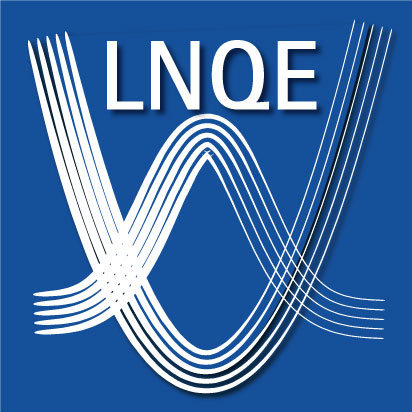Synthesis, self-assembly and printing of hard magnetic nanoparticles

| Leitung: | Supervisor: Prof. Dr. Georg Garnweitner, TU Braunschweig, Institute f. Particle Technology. Co-Supervisors: Prof. Dr. Nadja Bigall, LUH, Institute f. Physical Chemistry a. Electrochemistry; Dr.-Ing. Marc Wurz, LUH, Institute of Micro Production Technology |
| Team: | Marion Görke |
| Jahr: | 2020 |
The application of magnetic nanostructures for 3-dimensional data storage systems enables the combination of high performance and stability of solid state data storage systems with the low cost of magnetic data storage. Key prerequisite for the fabrication of such systems in large numbers is their preparation via self-assembly of individual nanoparticles as well as their placement on a substrate e.g. via printing processes. Hard magnetic nanomaterials are required due to their large magnetic remanence but are difficult to handle, as their magnetic attraction leads to strong agglomeration. So far, the processing of hard magnetic structures via self-assembly of individual nanoparticles from colloidal suspensions is not technically feasible.
In this project, the synthesis and self-assembly of hard magnetic nanomaterials as well as their controlled deposition on pre-patterned substrates shall be systematically investigated. In the last years, we have shown that highly defined hard magnetic thin films can be obtained from superparamagnetic (soft magnetic) nanoparticles that are converted to hard magnetic FePt via calcination. Furthermore, by combining iron oxide and FePt nanoparticles, magnetic coupling could be achieved, resulting in magnetic exchange bias properties that enable many applications in magnetic sensors and switches. Next, a controlled self-assembly of these building blocks shall be achieved via defined chemical interactions, allowing tunable magnetic properties by the combination of different nanoparticle sizes and morphologies. Moreover, nanoassemblies shall be achieved already in the dispersions (e.g. by encapsulation in micelles), resulting in hybrid 3-dimensional structures with specific magnetic properties. To realize defined nanostructures, pre-patterned surfaces (e.g. prepared via soft lithography, showing hydrophobic and hydrophilic domains) are utilized as substrates for the deposition of the nanoparticles via coating and printing processes. Thereby, both dispersions of the individual nanoparticles as well as of pre-structured assemblies shall be utilized. The obtained structures are then extensively characterized e.g. via magnetic force microscopy.
Figure: (a) Monolayer of soft magnetic iron oxide (large) and FePt (small) nanoparticles prior to calcination, and (b) after annealing, resulting in hard magnetic phases with exchange-bias coupling








